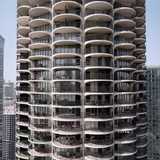Chicago apartments / Chicago
Life in the round
Standing out against a backdrop of drab, square tower blocks on the north bank of the Chicago River, the white “corncobs” of Bertrand Goldberg’s distinctive Marina City buildings are still inspiring, both inside and out.
For all that Chicago sits on the curve of Lake Michigan, it’s a city of extremely sharp edges. Its yawning flat topography is punctuated by square and rectangular blocks, arranged in one of the more perfect urban grid systems. It’s efficient but cold. The sunlight pierces the streets in blinding slivers throughout the day. Mies van der Rohe’s many black boxes here might be precise exponents of his modernist tract but surely only an architect can love them. Against this matrix of steel, glass and right angles, Bertrand Goldberg’s twin Marina City blocks – giant, scallop-edged concrete cylinders – are like two fingers to the rest of the city.
When they were completed in 1962 they were the tallest residential towers in America and the tallest reinforced concrete structure in the world. Locals call them “the corncobs”, but there’s far more to the Marina City towers than their shape. A “city within a city” is how Goldberg described the mixed-use development. It was his solution for affordable inner-city housing at a time when professionals were fleeing for the suburbs, draining the city centre of its population after work hours. With the Janitors’ Union as client and the realtor Charles Swibel (the future Chicago Housing Authority Chairman), Goldberg created a soaring manifesto for urban revitalisation.
The towers consist of a helter-skelter of car parks up to floor 19. Floors 21 to 60 are divided into pie slices of three different variations to create studios, one or two-bedroom units, each with its own semi-circular balcony. There’s also a supermarket, laundrette, dry cleaner, gym and marina. There used to be a separate medium-rise office building (now a hotel), a bowling alley, a saddle-shaped theatre (now a jazz venue), and ice rink (today a steak house). Marina City offered all the attractions of life in the suburbs for almost 900 apartments on just two acres of land in the city.
Above all though, it created a community – the residents speak of it with almost cult-like adulation. “This was the best decision I made in my life. I love it every single day,” says 90-year-old Blanche Foster, who has lived here since 1976. “It’s the biggest small town in existence,” explains Brian Muir, the residential realtor responsible for Marina City, who also operates as a caretaker and informal agony aunt for the buildings’ inhabitants. “It’s a building and way of life that people fall in love with.”

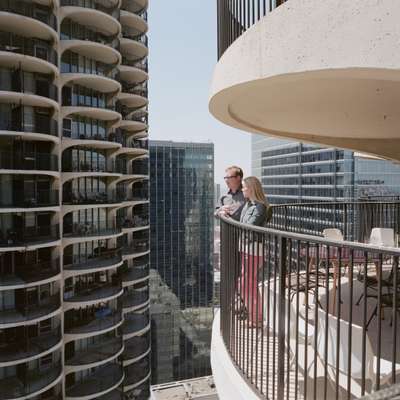
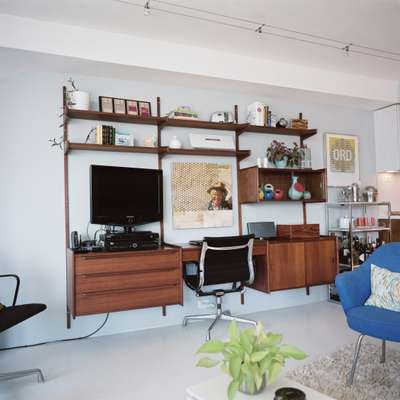
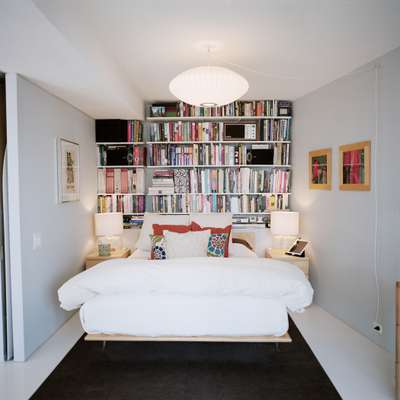
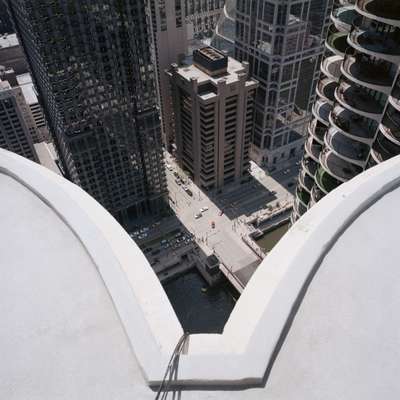
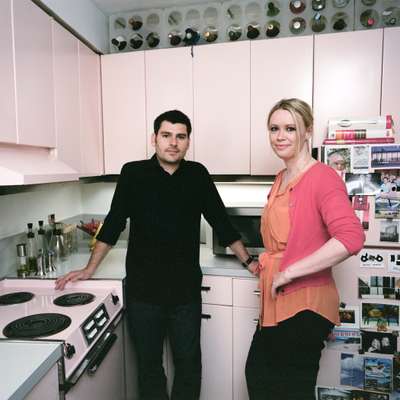
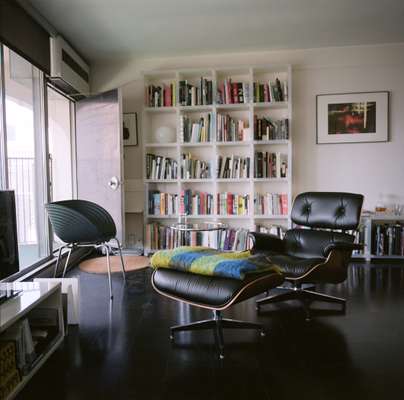

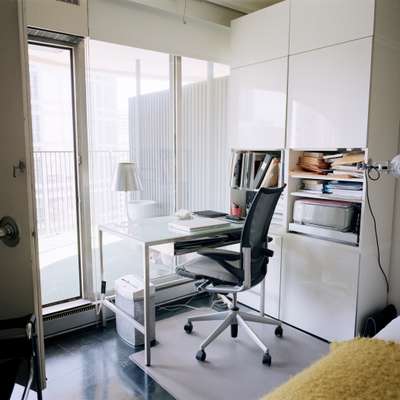
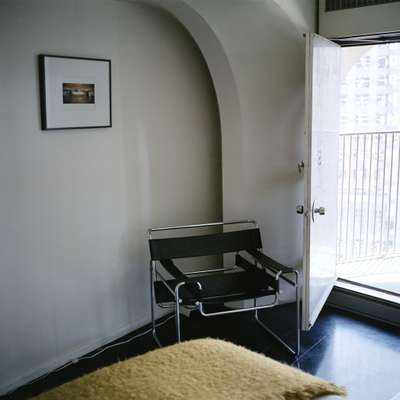
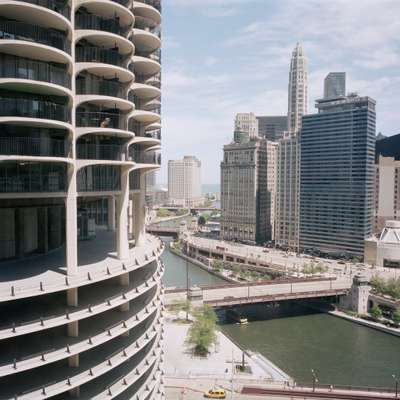
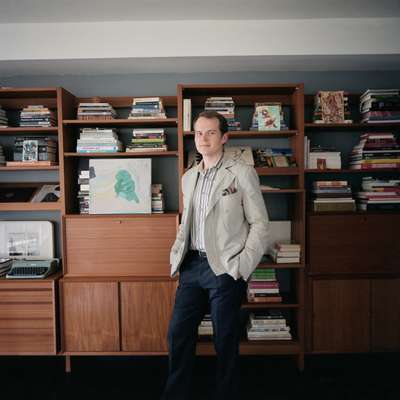

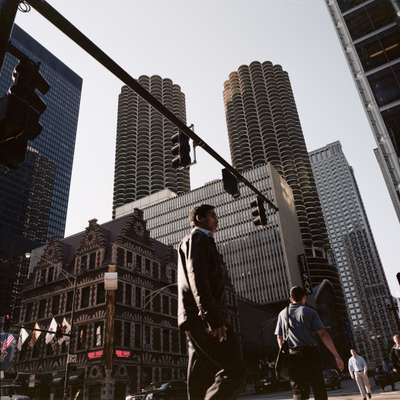
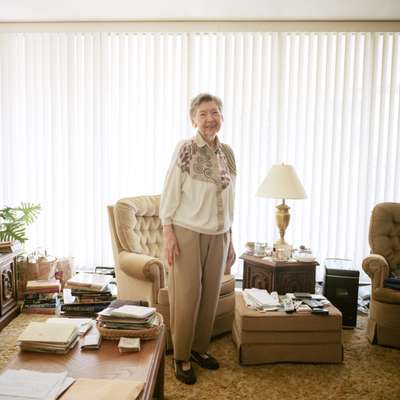

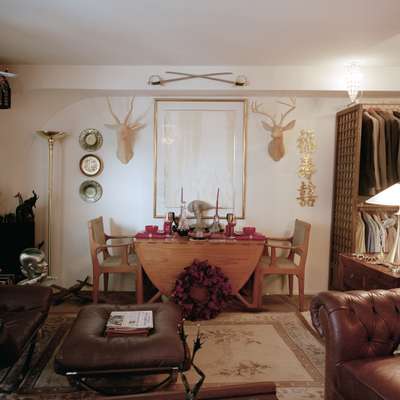
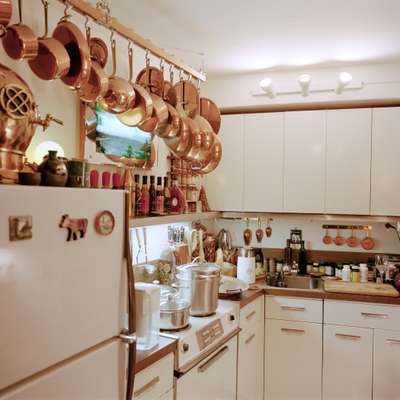
Muir studied architecture and then philosophy and has a very good read on the inhabitants and why the Marina City experiment has aged so well. “There’s room in Goldberg’s modernism for personal taste, or lack of it,” he explains. “People do what they like with their condos. The walls and décor can be ripped out to suit whoever wants to live here, however they want to live. We have rich and poor, students, architects, businessmen and pensioners, from all over the world under these roofs.” It serves as a student campus and a retirement home, and everything in between. And it works for everyone, it seems. People hold onto their apartments for around 40 years. “I will never leave Marina City.” Blanche shakes her head. “Not until it’s time to move to the great condo in the sky. It’s the only one with a better view.”
RESIDENT 01
Andrew and Melissa Moddrell
Unit 4935 – East Tower
“When I moved to Chicago in 2004, I’d go out of my way to drive past the towers,” says architect Andrew Moddrell. He’s lived here with his wife since 2006 in a one-bedroom unit, which they have radically remodelled. “The way we live has changed a lot compared to the conventionally domestic floor plan Goldberg conceived in the 1950s,” explains Moddrell. They’ve opened up the entire space, removing the walls that separated the kitchen and closet space from the main living area. They replaced the drywall that separated the bedroom from the living room with a sliding partition too. The couple has filled their apartment with mid-century designs, keeping a toe in the decade the building was completed.
“You never tire of the view,” he says. “It’s constantly changing and you feel so connected to the city, even though the scalloped shapes mean you’re totally private from your neighbours. The ratio of outdoor-to-indoor space is still one of the highest in the city – imagine how radical this was in the 1960s.” Moddrell has made it his business to collect as much memorabilia and printed matter on the project as he can get his hands on. “I’m fascinated by this vision and yet until the last five years there’s been so little written about Goldberg. It’s easy to assume he was driven by aesthetics over performance but living here you realise it’s absolutely performance-based. After 50 years, these apartments and this community work better than ever.”
RESIDENT 02
Iker and Julie Gil
Unit 3411 – West Tower
Bilbao-born architect Iker Gil and his architect wife have lived in Marina City since 2005. Their one-bedroom unit is as close to the original design as you will find, from the floor plan to the baby pink kitchen with original GE appliances. “It’s incredible that everything still works so well,” Gil says. “The oven heats 50 degrees warmer than it says, but that’s the only thing.” Of the original floor plan layout he says: “The narrow end of the pie slice has the private areas – the closet, the bathroom and the kitchen – then it opens out so the bedroom and living room have the most generous area, opening onto the balcony, which makes them seem even bigger.” He has also been chronicling life here. In 2008 he started documenting the towers’ inhabitants, the results of which were recently exhibited at the Art Institute alongside a retrospective of Goldberg’s work. “Everybody photographs the outside of Marina City but no one had told the story of what happens inside,” Gil explains. “There’s only three types of unit, yet there’s a million ways to live here. It’s the people that make the architecture work.”
RESIDENT 03
James Pike
Unit 3125 – East Tower
Pike is another architect living in Marina City. “I’ve taken advice from Karl Lagerfeld,” he explains. “He said fashion designers should wear fashion – I took this to mean that architects should live in great architecture. Marina City is near the top of any list.” He points to the studio balcony as the prime detail. “A balcony in a high rise is rare. Everyone here has at least one and they’re enormous. In the studios, they provide 40 per cent more usable space.” He waxes lyrical about the towers’ community feel, too: “Many of us here feel we are part of something special. I’ve met previous residents and we still treat each other like neighbours.”
RESIDENT 04
Blanche Foster
Unit 4611 – West Tower
“I’ve lived here since December 1976,” says 90-year-old Blanche Foster. “I moved for the convenience of its downtown location but over time it’s become my life.” Foster recently lost her son Michael, who she shared her apartment with. “Everyone here has been so wonderful – I have a mountain of empty food containers to return to all the neighbours who looked after me.” She’s also a lynchpin of life in Marina City herself. “I look after people’s cats in this tower when they’re away on holiday or business – it’s such a wonderful community, from students to the people I’ve known here since I moved in. Everyone looks out for each other.”
RESIDENT 05
Jerry Nelson
Unit 3104 – West Tower
“Welcome to the rabbit hole,” says Jerry Nelson when he opens the door to his studio. He is referring to the volume of stuff that he lives with – a lifetime of clothes, books and curious objects from around the world, which balance precariously everywhere. “I spent time on submarines in the 1950s so small spaces don’t bother me,” he says. “But it’s a bitch to dust.” Nelson works in the public affairs department for the Federal Reserve Bank of Chicago. He has been in this studio for 12 years but has lived in Marina City for 27 years. “I lost two apartments in my second divorce,” he explains. “It’s why I have so much stuff. But I love it like this – nothing’s changed in Marina City since I’ve been here. Except the view, which changes constantly.” A building went up opposite recently that obscured his view, but he’s not bothered. “The balcony’s for partying, not staring into space.”
Floor plans
The art of the pie slice
Marina City is divided into three types of apartment: two-bedroom, one-bedroom and studios. Goldberg designed them to be as flexible as possible. The only supports come from the curved core by the entrance and the columns that separate the living room from the balcony. This means walls can be ripped down (as at the Moddrell’s) and the enclosed floorplans that suited 1960s living can be updated for a more open-plan lifestyle. Utility rooms are at the narrow end, living areas are at the widest.
Vital statistics
Marina City in numbers
64 Two bed apartments
576 One-bed apartments
256 Studios
120,000 Price for a studio today (in US$)
430,000 Price for a two-bed today
80,000 Price for a two-bed in 1977
25 Number of sales in 2011
11 Sales closed so far in 2012

